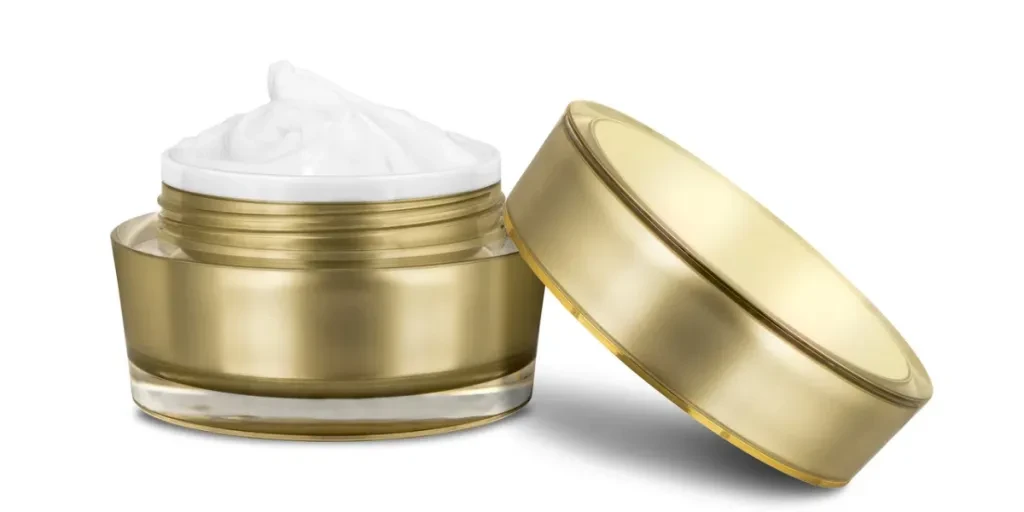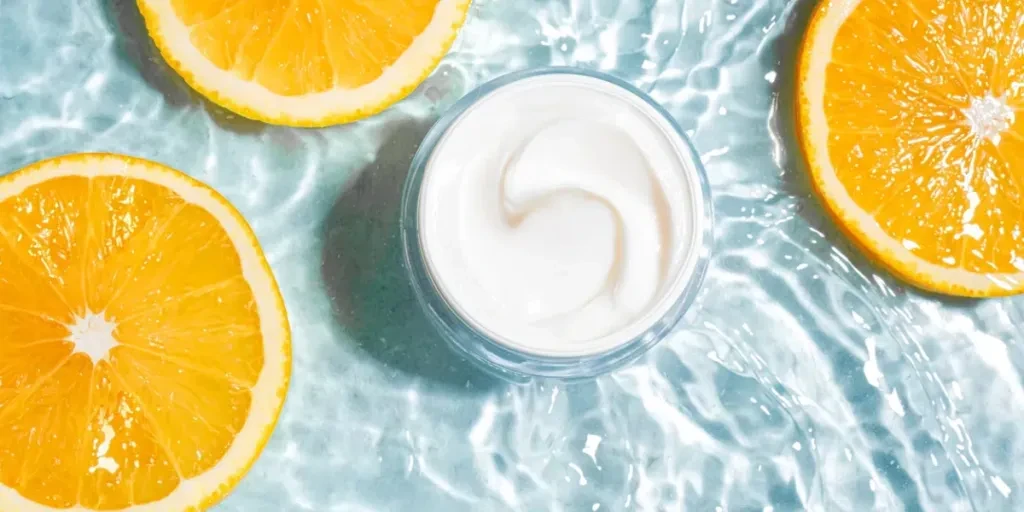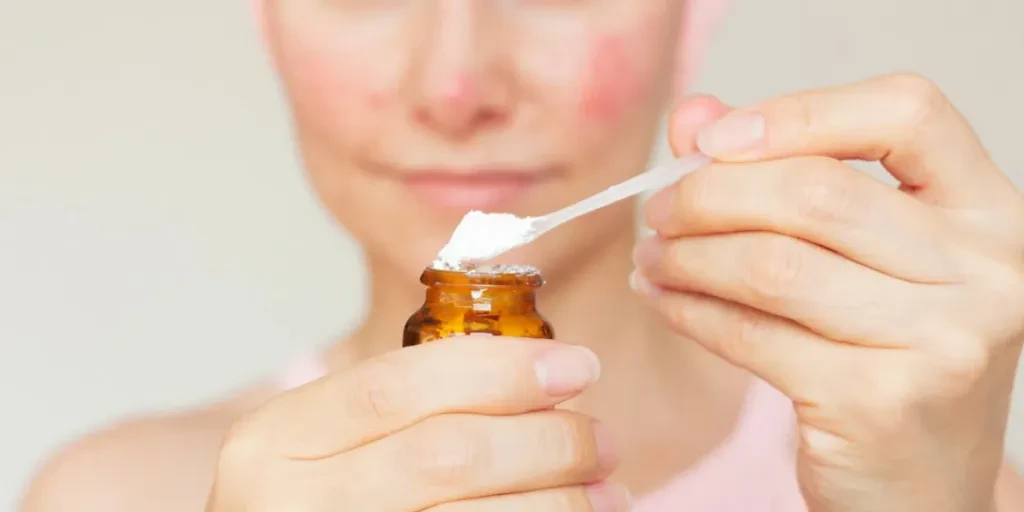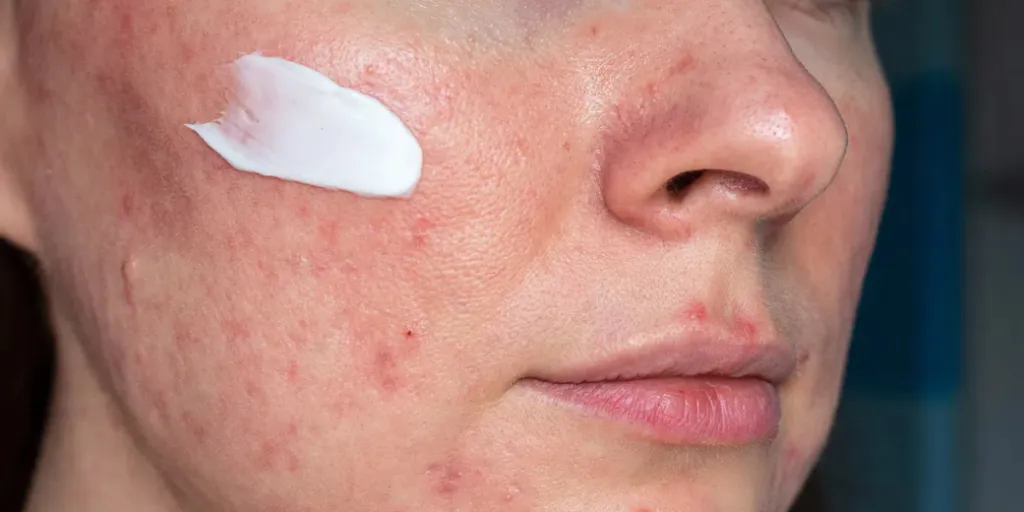Giriş: Rosacea Cilt Bakım Çözümlerine Yönelik Artan Talebin Anlaşılması
2025 yılında cilt bakımı sektörü, kızarıklık, görünür kan damarları ve bazen akne benzeri şişliklerle karakterize kronik bir cilt rahatsızlığı olan rosacea'yı ele almak için özel olarak tasarlanmış ürünlere yönelik talepte önemli bir artışa tanık oluyor. Bu artan ilgi, artan tüketici farkındalığı, artan harcanabilir gelirler ve dijital pazarlama ve sosyal medyanın etkisiyle yönlendiriliyor. Daha fazla kişi rosacea'yı yönetmek için etkili çözümler aradıkça, özel cilt bakımı ürünlerine yönelik pazar genişlemeye devam ediyor ve perakendeciler ve toptancılar dahil olmak üzere iş alıcıları için kazançlı fırsatlar sunuyor.
İçindekiler:
– Rosacea Cilt Bakım Ürünlerinin Pazar Potansiyelini Keşfetmek
– Rosacea İçin Popüler Ürün Türleri: Artıları, Eksileri ve Tüketici Geri Bildirimleri
– Yenilikçi Çözümlerle Tüketici Sorunlarını Ele Alma
– Piyasadaki Yeni ve Yenilikçi Rosacea Cilt Bakım Ürünleri
– Özet: Rosacea Cilt Bakım Ürünlerinin Kaynağı İçin Önemli Noktalar
Rosacea Cilt Bakım Ürünlerinin Pazar Potansiyelinin Araştırılması

Rosacea Nedir ve Neden Dikkat Çekiyor?
Rosacea, dünya çapında milyonlarca insanı etkileyen yaygın ancak çoğu zaman yanlış anlaşılan bir cilt rahatsızlığıdır. Kalıcı kızarıklık, görünür kan damarları ve bazen yüzde küçük, kırmızı, irin dolu şişlikler olarak kendini gösterir. Rosaceanın kesin nedeni bilinmemektedir ancak genetik ve çevresel faktörlerin bir kombinasyonu olduğuna inanılmaktadır. Durum, güneşe maruz kalma, stres, baharatlı yiyecekler ve alkol gibi çeşitli faktörler tarafından tetiklenebilir. Rosacea farkındalığı arttıkça, semptomlarını yönetmek için etkili cilt bakımı çözümlerine olan talep de artmaktadır.
Trend Sosyal Medya Hashtag'leri ve Daha Geniş Trend Konuları
Dijital çağda, sosyal medya tüketici tercihlerini şekillendirmede ve pazar trendlerini yönlendirmede önemli bir rol oynuyor. #RosaceaAwareness, #RosaceaSkincare ve #SensitiveSkinSolutions gibi hashtag'ler Instagram ve TikTok gibi platformlarda önemli bir ilgi gördü. Bu hashtag'ler yalnızca durum hakkında farkındalık yaratmakla kalmıyor, aynı zamanda nazik, tahriş etmeyen cilt bakım ürünleri kullanmanın önemini de vurguluyor. Ayrıca, temiz güzellik, doğal içerikler ve kişiselleştirilmiş cilt bakımı gibi daha geniş trend konuları tüketici tercihlerini etkiliyor ve rosacea'ya özgü ürünlere olan talebi daha da artırıyor.
Cilt Bakım Pazarında Talep Büyümesi Alanlarının Belirlenmesi
Küresel cilt bakımı pazarı, rosacea gibi belirli cilt sorunlarına hitap eden ürünlere özel bir vurgu yaparak güçlü bir büyüme yaşıyor. Profesyonel bir rapora göre, kozmetik cilt bakımı pazarı 189.07'te 2023 milyar ABD dolarından 199.62'te 2024 milyar ABD dolarına çıktı ve 281.93'a kadar %2030'lik bir bileşik yıllık büyüme oranıyla 5.87 milyar ABD dolarına ulaşması bekleniyor. Bu büyüme, cilt bakımı rutinlerinin sağlık yararları konusunda artan tüketici farkındalığı ve orta sınıf haneler arasında artan harcanabilir gelirlerle destekleniyor.
Amerika'da, özellikle ABD ve Kanada'da, tüketici farkındalığı ve yeni ürün formüllerine yatırım yapan yerleşik kilit oyuncuların varlığıyla yönlendirilen yenilikçi cilt bakımı çözümlerine yönelik güçlü bir talep var. Avrupa pazarı, paraben, sentetik boyalar ve kokular içermeyen ürünleri tercih ederek ürün etkinliğine, içerik şeffaflığına ve çevresel sürdürülebilirliğe öncelik veriyor. Asya-Pasifik bölgesinde, yerel markaları teşvik eden kültürel etkiler ve hükümet politikaları, Çin, Hindistan, Japonya ve Güney Kore'de önemli pazarlarla satın alma davranışlarını şekillendiriyor.
Temiz ve sürdürülebilir cilt bakım ürünlerinin yükselişi, kişiselleştirilmiş cilt bakım çözümlerinin popülaritesi ve cilt bakımı analizi için yapay zeka ve makine öğreniminin entegrasyonu, pazarı yönlendiren dikkate değer trendlerdir. Ayrıca, DNA tabanlı kişiselleştirilmiş cilt bakım ürünlerinin, çevre dostu ve yeniden doldurulabilir ambalajların ve cilt mikrobiyomu dostu formüllerin geliştirilmesinin cilt bakım sektörünün geleceğini şekillendirmesi bekleniyor.
Sonuç olarak, rosacea cilt bakımı çözümlerine yönelik artan talep, güzellik ve kişisel bakım sektöründeki iş alıcıları için umut verici bir fırsat sunmaktadır. Perakendeciler ve toptancılar, pazar eğilimlerine, tüketici tercihlerine ve yenilikçi ürün geliştirmelerine uyum sağlayarak, rosaceadan kurtulmak isteyen bireylerin ihtiyaçlarını etkili bir şekilde karşılayabilir ve genişleyen pazar potansiyelinden yararlanabilir.
Rosacea İçin Popüler Ürün Türleri: Artıları, Eksileri ve Tüketici Geri Bildirimleri

Yumuşak Temizleyiciler: İçerikler ve Etkililik
Nazik temizleyiciler, rosacea'lı bireyler için cilt bakım rejiminin temel taşıdır. Bu ürünler, cildin doğal yağlarını soymadan kirleri gidermek için formüle edilmiştir; bu da cilt bariyerini korumak için çok önemlidir. Gliserin, seramidler ve niasinamid gibi içerikler, nemlendirici ve yatıştırıcı özellikleri nedeniyle bu temizleyicilerde yaygın olarak bulunur. Örneğin, La Roche-Posay'ın Toleriane Hydrating Gentle Cleanser'ı, cildin nem dengesini korurken temizleme yeteneği nedeniyle şiddetle tavsiye edilir.
Etkililik, nazik temizleyiciler tedarik ederken iş alıcıları için önemli bir husustur. La Roche-Posay'in Effaclar Arındırıcı Köpüren Jeli'nde bulunanlar gibi mikrobiyom dostu bileşenler içeren ürünler, cilt sağlığını korumada özellikle etkilidir. Bu temizleyici, rosacea alevlenmelerini azaltmak için gerekli olan cildin pH'ını ve mikrobiyomunu dengelemek için Phylobioma kullanır. Tüketici geri bildirimleri genellikle tahriş etmeyen formüllerin önemini vurgular ve birçok kullanıcı cilt dokusunda önemli iyileşmeler ve kızarıklığın azaldığını bildirir.
Yatıştırıcı Nemlendiriciler: Temel Bileşenler ve Kullanıcı Yorumları
Yatıştırıcı nemlendiriciler, nemlendirme sağlayarak ve iltihabı azaltarak rosacea'nın yönetilmesinde hayati bir rol oynar. Bu ürünlerdeki temel bileşenler arasında cilt bariyerini güçlendirmek ve nemi korumak için birlikte çalışan hyaluronik asit, seramidler ve peptitler bulunur. Örneğin Rothea'nın Resilience Cream'i, tahrişe neden olmadan yaşlanma karşıtı faydalar sunmak için bu bileşenleri doğal bir retinol alternatifi olan bakuchiol ile birleştirir. Bu ürün özellikle kırışıklıkları gözle görülür şekilde azaltma ve 72 saate kadar cilt nemini iyileştirme yeteneğiyle dikkat çekmektedir.
Kullanıcı yorumları genellikle yatıştırıcı nemlendiricilerde kokusuz ve hipoalerjenik formüllerin önemini vurgular. La Roche-Posay'ın Neurosensine ve gliserin içeren Toleriane Rosaliac AR yüz nemlendiricisi gibi ürünler hassas cildi yatıştırma ve kızarıklığı azaltma yetenekleri nedeniyle övülür. İş alıcıları, tüketici geri bildirimlerinin sürekli olarak rosacea semptomlarını kötüleştirmeyen nazik, etkili nemlendiricilere olan ihtiyacı vurgulaması nedeniyle ürün seçerken bu faktörleri göz önünde bulundurmalıdır.
Kızarıklık Karşıtı Serumlar: Faydaları ve Olası Dezavantajları
Kızarıklık karşıtı serumlar, kızarıklık ve iltihap gibi rosacea'nın belirli semptomlarını hedeflemek için tasarlanmıştır. Bu serumlar genellikle iltihap karşıtı ve cildi yatıştırıcı özellikleriyle bilinen azelaik asit, niasinamid ve yeşil çay özü gibi bileşenler içerir. Örneğin, IT Cosmetics'in Bye Bye Redness Serum'u, anında kızarıklık giderimi ve uzun vadeli cilt faydaları sağlamak için kolloidal yulaf ezmesi, centella ve peptitleri bir araya getirir. Bu ürün, kızarıklığı nötralize etmede ve bir hafta içinde cilt berraklığını iyileştirmede özellikle etkilidir.
Ancak, kızarıklık karşıtı serumların potansiyel dezavantajları arasında aktif bileşenlerden kaynaklanan tahriş riski de yer alır. İşletme alıcıları, olumsuz reaksiyonları en aza indirmek için yama testi ve tüketici eğitiminin öneminin farkında olmalıdır. Adapalen ve azelaik asit içeren Skinfix'in Acne+ Adapinoid Jel gibi ürünler, cilt bariyeri sağlığını korurken akne tedavisi faydaları sağlayarak dengeli bir yaklaşım sunar. Tüketici referansları genellikle ek tahrişe neden olmadan görünür sonuçlar veren serumlara olan ihtiyacı vurgular.
Yenilikçi Çözümlerle Tüketici Sorunlarını Ele Alma

Rosacea Hastalarının Karşılaştığı Yaygın Zorluklar
Rosacea hastaları sıklıkla çevresel faktörlerden kaynaklanan kalıcı kızarıklık, hassasiyet ve alevlenmeler gibi zorluklarla karşı karşıya kalırlar. Bu sorunlar, rosacea hastalarının yaşam kalitesini ve öz saygısını önemli ölçüde etkileyebilir. İşletme alıcılarının bu sorunları etkili bir şekilde ele alan ürünleri bulmak için bu ağrı noktalarını anlamaları gerekir. Örneğin, La Roche-Posay'in Anthelios Ultra-Fluid güneş kremleri gibi geniş spektrumlu güneş koruması sunan ürünler, UV kaynaklı alevlenmeleri önlemek için olmazsa olmazdır.
Çığır Açan İçerikler ve Etkileri
Mikrobiyom dostu bileşikler, doğal retinol alternatifleri ve gelişmiş peptitler gibi çığır açan bileşenler rosacea cilt bakımında devrim yaratıyor. La Roche-Posay'in Effaclar Arındırıcı Köpüren Jelinde bulunan Phylobioma gibi bileşenler, cildin mikrobiyomunu dengelemeye yardımcı olarak alevlenme olasılığını azaltır. Rothea'nın Resilience Cream'inde kullanılan doğal bir retinol alternatifi olan Bakuchiol, retinol ile yaygın olarak ilişkilendirilen tahriş olmadan yaşlanma karşıtı faydalar sunar. Bu yenilikçi bileşenler, işletme alıcılarına rosacea hastalarının özel ihtiyaçlarını karşılayan seçenekler sunar.
Tüketici Görüşleriyle Desteklenen Etkili Çözümler
Tüketici referansları, rosacea cilt bakım ürünlerinin etkinliğini doğrulamada önemli bir rol oynar. IT Cosmetics' Bye Bye Redness Serum ve Skinfix's Acne+ Adapinoid Gel gibi ürünler, kızarıklığı azaltma ve cilt dokusunu iyileştirme yetenekleri nedeniyle büyük övgü alırlar. İş alıcıları, olumlu tüketici geri bildirimleri olan ürünlere öncelik vermelidir, çünkü bu incelemeler genellikle cilt bakım çözümlerinin gerçek dünyadaki faydalarını ve potansiyel dezavantajlarını vurgular. Örneğin, La Roche-Posay'ın Toleriane Rosaliac AR yüz nemlendiricisini kullananlar, cilt konforunda ve kızarıklığın azalmasında önemli gelişmeler bildirmektedir, bu da onu rosacea semptomlarını ele almak için güvenilir bir seçim haline getirir.
Piyasadaki Yeni ve Yenilikçi Rosacea Cilt Bakım Ürünleri

Son Teknoloji Formülasyonlar ve Teknolojiler
Rosacea cilt bakımı pazarı yenilikçi formüller ve teknolojilerde bir artışa tanık oluyor. Omnilux'un Mini Skin Corrector'ı gibi ürünler, kırışıklıklar, ince çizgiler ve iltihap gibi yaygın endişeleri gidermek için kırmızı ışık terapisini kullanır. Bu eller serbest cihaz kolajen üretimini artırır ve cilt tonunu eşitler, rosacea hastaları için invaziv olmayan bir çözüm sunar. Benzer şekilde, Riversol'un Kapsamlı Akne Tedavisi, uygulama sırasında salisilik asidi stabilize eden ve aktive eden çift odacıklı bir iletim sistemine sahiptir, akne ve rosacea için nazik ancak etkili bir çözüm sunar.
Fark Yaratan Yükselen Markalar
Yeni markalar, doğal ve etkili içeriklere odaklanarak rosacea cilt bakımı pazarında önemli adımlar atıyor. OYO Skincare ve Urban Kind gibi markalar, cilt bakımına yönelik yenilikçi yaklaşımlarıyla popülerlik kazanıyor. OYO Skincare'in samimi bakım rejimi, cilt tahrişlerini ve bakım endişelerini gidermek için brokoli çekirdeği yağı ve salatalık gibi doğal içerikler kullanıyor. Urban Kind'in tescilli UrbanA7™ formülüne sahip kirlilik karşıtı çözümleri, çevresel stres faktörlerine karşı koruma sağlıyor ve cilt sağlığını iyileştiriyor. Bu markalar, iş alıcılarına rosacea ile başa çıkmak için yeni ve etkili seçenekler sunuyor.
Rosacea Cilt Bakımı Yeniliklerinde Gelecekteki Trendler
Rosacea cilt bakımındaki gelecekteki trendlerin kişiselleştirilmiş ve uyarlanabilir çözümlere odaklanması muhtemeldir. QNET'in Physio Radiance Visage+ Yüz Cihazı gibi bireysel cilt ihtiyaçlarına ve çevresel koşullara hitap eden ürünlerin ilgi görmesi bekleniyor. Bu cihaz, kişiselleştirilmiş bakım sunmak ve iklim kaynaklı cilt sorunlarına karşı koruma sağlamak için EMS ve radyofrekans gibi birden fazla teknolojiyi kullanır. İşletme alıcıları, rosacea hastalarının değişen ihtiyaçlarını karşılayan ürünleri kaynaklamak için bu trendler hakkında bilgi sahibi olmalıdır.
Özet: Rosacea Cilt Bakım Ürünlerinin Kaynağı İçin Önemli Noktalar

Sonuç olarak, etkili rosacea cilt bakım ürünleri tedarik etmek, rosacea hastalarının karşılaştığı özel ihtiyaçlar ve zorluklar hakkında derin bir anlayış gerektirir. Ticari alıcılar, nazik, tahriş etmeyen formüllere, yenilikçi bileşenlere ve olumlu tüketici geri bildirimlerine sahip ürünleri önceliklendirmelidir. Ortaya çıkan markalar ve gelecekteki trendler hakkında bilgi sahibi olmak, alıcıların rosacea yönetimi için en etkili ve güncel çözümleri sunabilmelerini sağlayacaktır.





 Afrikaans
Afrikaans አማርኛ
አማርኛ العربية
العربية বাংলা
বাংলা Nederlands
Nederlands English
English Français
Français Deutsch
Deutsch हिन्दी
हिन्दी Bahasa Indonesia
Bahasa Indonesia Italiano
Italiano 日本語
日本語 한국어
한국어 Bahasa Melayu
Bahasa Melayu മലയാളം
മലയാളം پښتو
پښتو فارسی
فارسی Polski
Polski Português
Português Русский
Русский Español
Español Kiswahili
Kiswahili ไทย
ไทย Türkçe
Türkçe اردو
اردو Tiếng Việt
Tiếng Việt isiXhosa
isiXhosa Zulu
Zulu